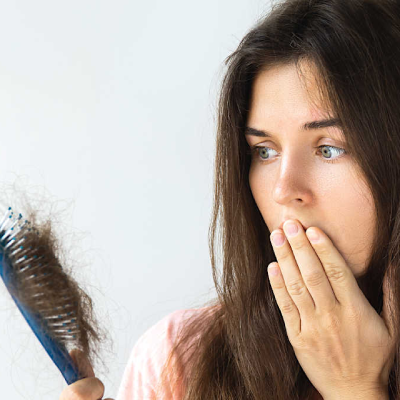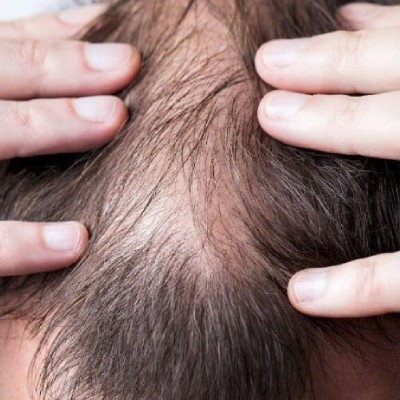Hair Restoration Growth Timeline: What to Expect

20 August 2022

moneshairexperts

Our hair is something we take for granted until they have gone from bad to worse. For many people, hair restoration can help restore what appears to be a full head of hair or at least one that is fuller. A method to feel more secure about your appearance is to have hair restoration done if losing your hair or thinning worries you.
However, you can consult with an Advanced Hair Studio hair professional on what to anticipate during and following the procedure to make you feel at ease and less worried about the procedure.
What is Hair Restoration?
Hair restoration is a treatment where a professional surgeon plants hair on a bald spot on the head. Typically, the surgeon moves hair from the head's top or front to the head's side or rear.
Under local anesthetic, hair restorations often take place in a surgeon's clinic.
Most hair loss cases are caused by pattern baldness due to genetics. The remaining cases result from a variety of reasons, such as:
- Diet
- Stress
- Illness
- Drugs
- Hormonal imbalance
Hair Growth Stages
The cycle of hair growth and loss occurs in stages; there are four stages. Which are:
* Anagen (Growth phase) * Catagen * Telogen (resting phase) * Exogen (hair shedding phase) Let's understand each of the four stages in detail:1. Anagen
The longest of the four phases, anagen, is the growth phase. About three to five years pass while hairs are in the anagen stage. Some hairs, however, can continue to grow for seven years. The hair follicles pump out hairs during anagen when they continue to grow until they are completely dead. Compared to face or pubic hair, the anagen phase of scalp hair is longer.2. Catagen
Following the anagen phase is the transitional phase known as catagen. The hair follicles shrink, and growth slows throughout ten days. The hair remains on the scalp throughout its last days of growth even though it separates from the hair follicle. At any given time, 3-5 percent of hairs are in the catagen phase.3. Telogen
Telogen is the resting stage after the catagen transition phase. After a hair stops growing, it will stay in place for around three months. In the hair follicles during this time, new hairs begin developing. About 10 to 15 percent of hairs are in the telogen phase at any given moment.4. Exogen
The exogen phase can be considered an extension of the telogen period. It might persist between two and five months. Hair cut off from the follicle and isn't growing will fall out during exogen. This hair shedding may happen when you sleep, wash, or brush your hair. New hairs are already sprouting in the hair follicles as old hairs fall out during the exogen phase.What to Expect?

Now that you've had a hair restoration, when can you anticipate seeing the final results? How can you tell if your growth is "on track" or whether it differs from that of the typical patient?
The "growing" of hair restoration and how the results seem to depend on two distinct factors: "popping" and maturity.
Popping is when newly planted hairs break through the scalp; maturity happens when these hairs become thicker, darker, and more natural-looking.
When every hair has "popped" through the scalp, and each one has fully grown by thickening, darkening, and normalizing in texture, hair restoration has reached its ultimate growth stage.
Let's discuss the growth timeline to understand what happens after the hair restoration.
1. Hair Growth after 7 Days
The donor and recipient areas will experience a healing phase after your hair restoration. These regions will be wrapped, and it is typical to feel some pain at first, followed by itching as the scabs form and come off. You must adhere to the aftercare guidelines your clinic gives you throughout this period.You can use medicines as suggested by your surgeon during the first seven days; these medicines will help you in case of discomfort or difficulty. You can wear a cap outside to shield yourself from the elements.
Additionally, you should wait two weeks before washing your hair, rubbing it with towels, scratching your scalp, or engaging in strenuous physical activity.
2. Hair Growth after one month
Your hair will enter the resting (telogen) phase at the recipient location and eventually fall out (exogen). The primary underlying mechanism causes hair to fall after hair restoration. It's normal for the recipient area of your scalp to be spotty in growth because the hair is at different phases of the development cycle. New hair should have already started to grow and cover the donor spot.
You should call your clinic if you see any prolonged inflammation, such as skin that still has redness and is hot to the touch. You shouldn't be concerned if your restored hair starts to fall out because this is a normal part of the healing process.
3. Hair growth after six month
At this stage, your new hairs will experience a noticeable growth spurt as they get thicker and stronger. Over the coming months, this will continue.
It will help if you understand that various circumstances, such as the recipient area's location and thehair regrowth treatment, might alter growth rates. By this point, you shouldn't expect to see the complete results of your hair restoration.
4. Hair growth after 9-12 month
Your new hair will keep thickening as it grows at a rate of about 1-2 cm every month. If you've grown your hair to a fair length, you can get it cut and styled any way you like.
5. Hair growth after 12-18 month
You should be able to notice the full effects of your hair restoration between a year and 18 months after the procedure. Your entire hair restoration should have matured, penetrating the scalp and developing complete thickness and darkening.
At this stage, you can take care of and appreciate your new hair as you normally would.
Factors Affecting Hair Growth Timeline
The technique employed during the procedure and the area where the follicle will be implanted is of special importance. Due to a variety of variables, the developed follicles expand at various speeds. For instance, the frontal region's follicles develop more quickly than those in the head because it is home to numerous arteries and blood vessels that supply the hair with nutrients.
Other factors that may affect hair growth timeline are: * Not following the doctor's instructions seriously * Not taking a good diet * Any disease or illnessIt is vital to abide by a healthy lifestyle and follow all the instructions given by the doctor. By the end of the year, you will have full growth, but it's crucial to remember that everyone is unique and that some will experience results much more quickly or slowly than others.
This period is an approximate average of what you should anticipate in the 18 months after a hair restoration procedure. If you experience faster or slower growth, it does not necessarily indicate that your outcome will be better or worse than anyone else's.
Each patient will experience a varied growth cycle because every person is physiologically different. Many industry professionals assert that it takes 18 months following the surgery to witness the full outcomes.
Conclusion
The patient shouldn't rush the results because a hair restoration procedure will take time to become accurate and show the desired results. Our team of professionals at Advanced Hair Studio has served in the field for years, delivering 100 % results. You can speak with our consultants if you have any questions regarding the hair restoration procedure and its recovery. Please book an appointment with us to regain your dream hair.
Stay Updated
Subscribe to our email newsletter for helpful tips and valuable resourses
Be an influencer
Join forces with Advanced Hair Studio! Explore exciting collaboration opportunities tailored for influencers. Let's redefine haircare together.
Connect now












